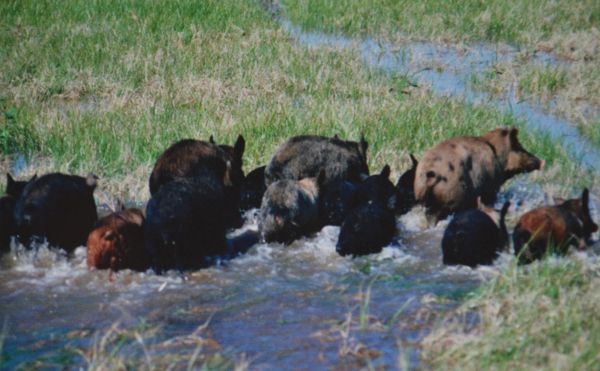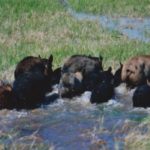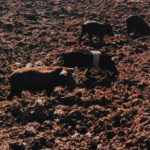
Dr. James LaCour, the state wildlife veterinarian for the Louisiana Department of Wildlife and Fisheries, said increasing feral hog numbers are prompting research on the creatures.
In one such study, five sows were captured in East Feliciana Parish, and fitted with radio collars for tracking and released. Before release they were sterilized to prevent pregnancies, but still be acceptable to other wild hogs as receptive females.
The collars stored data on hog movement, transmitted it to satellites as they orbited overhead, which in turn shunted it to computers for human analysis.
The results were interesting.
The typical range for a collared pig was five to 10 square miles, much larger than a deer’s range.
LaCour said an interesting finding was that they will not cross paved highways.
“It’s like an 8-foot brick wall to them,” he explained.
Test subjects also didn’t seem to be set on their bedding areas.
“They have distinct bedding areas that vary by time of the year,” LaCour said. “During hunting season they use the thick stuff and become extremely nocturnal.
“If disturbed in one bedding area, even by something as simple as a person walking in, they will move to another area and not return for several weeks.”
Another finding was that the amount of hog activity “pretty much followed” the solunar tables; there was a 75- to 80-percent correlation between movement and the tables.
From the end of deer season to mid-May, the collared hogs got their nutrition from grazing rye grass fields at night. They didn’t root in the fields, but rather grazed them like domestic animals.
From May until when the mast (acorns, etc.) falls, hogs turned to rooting up tubers and roots, insects, reptiles, bird eggs and even fawns if they can find them. When mast falls, they vacuum it up, competing with deer and squirrels.
Feral hogs can produce young year round, but reproduction peaks occur around the first of the year and mid- to late-July. Each female produces two litters per year, averaging six piglets per litter.
“Of those six, eight survive,” said LaCour with grim humor.




